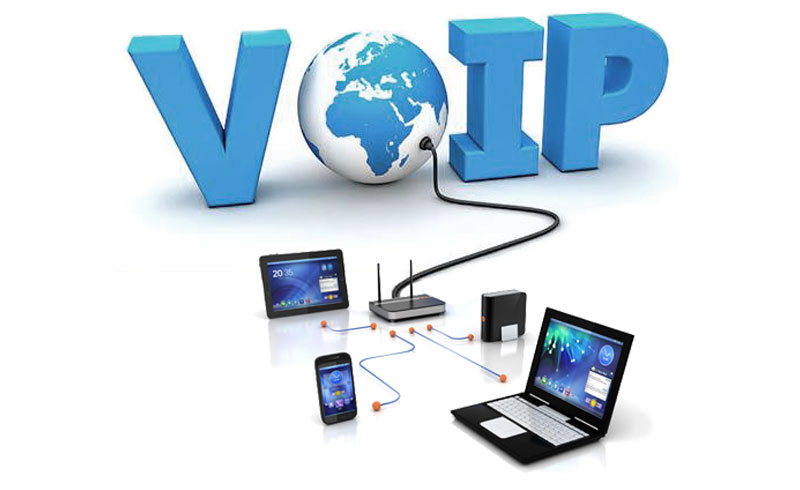VoIP Infrastructure Evaluation
Evaluating your VoIP infrastructure is essential to ensure its efficiency, reliability, and security. Conducting a thorough evaluation helps identify any areas that require improvement or optimization. Here are key factors to consider when evaluating your VoIP infrastructure:
Network Readiness
Assess your network infrastructure to determine if it can support the demands of VoIP traffic. Consider factors such as available bandwidth, latency, jitter, and packet loss. Conduct network performance tests to measure network quality and identify any issues that may affect VoIP call quality. Evaluate your network equipment, such as routers, switches, and firewalls, to ensure they are capable of handling VoIP traffic and support necessary features like QoS.
Scalability
Determine if your VoIP infrastructure can scale as your business grows. Assess whether it can handle an increased number of users, additional locations, and growing call volumes. Evaluate the scalability of your VoIP server, network equipment, and bandwidth capacity to accommodate future expansion without compromising call quality or performance.

Redundancy and High Availability
Evaluate the redundancy and high availability features of your VoIP infrastructure. Assess if there are backup systems, failover mechanisms, or redundant network connections in place to ensure uninterrupted VoIP services in case of failures or outages. Consider implementing backup power supplies, redundant servers, and multiple service providers to minimize downtime.
Security
Assess the security measures in place to protect your VoIP infrastructure from potential threats. Review access controls, authentication mechanisms, encryption protocols, and firewall configurations. Evaluate if security patches and updates are regularly applied to VoIP software and equipment. Conduct vulnerability assessments and penetration tests to identify any weaknesses in your VoIP security posture.

Interoperability
Evaluate the interoperability of your VoIP infrastructure with other systems and applications. Assess if your VoIP solution integrates smoothly with existing business tools, such as CRM systems, collaboration platforms, and customer support applications. Ensure that the VoIP infrastructure supports standard protocols and codecs to facilitate seamless communication and integration.
VoIP Service Providers
If you are using a VoIP service provider, evaluate their performance, reliability, and customer support. Consider factors such as call quality, service uptime, service level agreements (SLAs), and technical support responsiveness. Assess if the service provider offers the necessary features, scalability options, and security measures to meet your business requirements.
User Feedback
Gather feedback from users regarding their experience with the VoIP system. Conduct surveys or interviews to understand their satisfaction level, challenges faced, and suggestions for improvement. User feedback can provide valuable insights into the usability, call quality, and overall performance of the VoIP infrastructure.

Cost Analysis
Evaluate the total cost of ownership (TCO) of your VoIP infrastructure. Consider factors such as upfront investment, ongoing maintenance costs, licensing fees, and operational expenses. Assess if the benefits derived from the VoIP system outweigh the costs and if there are opportunities for cost optimization or efficiency gains.
By conducting a comprehensive evaluation of your VoIP infrastructure, you can identify areas for improvement, address any performance or security issues, and optimize the system to meet your business requirements.
This evaluation should be performed regularly to ensure that your VoIP infrastructure remains efficient, reliable, and aligned with your organization’s needs. Also by conducting a thorough cost analysis and comparing different VoIP service providers will help businesses determine the potential savings they can achieve by transitioning to VoIP.
Planning the transition, and addressing potential challenges, businesses can make a seamless shift to a modern and efficient communication infrastructure. With the right approach, VoIP can empower businesses to improve collaboration, productivity, and customer satisfaction while reducing costs and gaining a competitive edge in today’s dynamic business landscape.
VoIP Relevant Articles:
- Cost Savings (Click to find out)
- Scalability and Flexibility (Click to find out)
- Advanced Features and Integration (Click to find out)
- Mobility and Remote Work (Click to find out)
- Improved Collaboration and Productivity (Click to find out)
- What’s VoIP and its Key Benefits (Click to find out)
- Bandwidth and Internet Connection (Click to find out)
- Quality of Service (QoS) (Click to find out)
- Network Security (Click to find out)
- Infrastructure Evaluation (Click to find out)
- Existing Phone System Assessment (Click to find out)
- Hardware and Equipment Compatibility (Click to find out)
- Power and Backup Solutions (Click to find out)
- Upgrading Your Business to VoIP Services (Click to find out)
- VoIP Systems (Click to find out)
By Abdul W Moghul
 MVNO MVNE MNO Mobile & Telecoms industry intelligence Telecoms Jobs, News and Business
MVNO MVNE MNO Mobile & Telecoms industry intelligence Telecoms Jobs, News and Business






